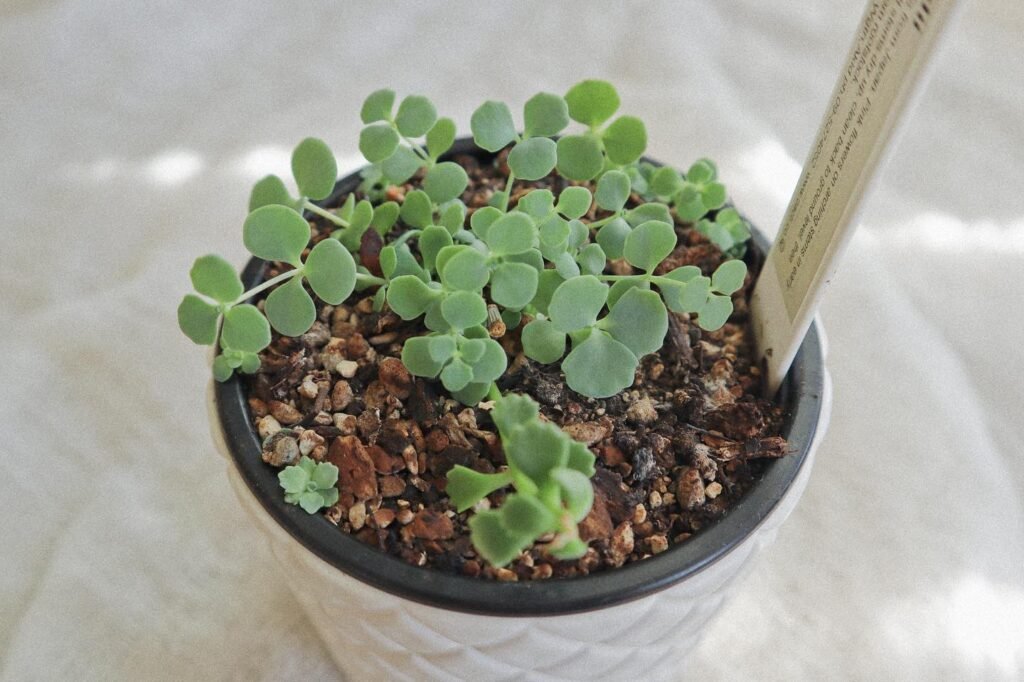Are you a succulent plant enthusiast looking to add a touch of beauty to your garden? Look no further than Hylotelephium sieboldii, also known as October Daphne. This ornamental plant, with its stunning pink flowers and fleshy grey-blue leaves, is a popular choice for gardening enthusiasts in the UK.
In this article, I will guide you through the essential care tips for Hylotelephium sieboldii, from its appearance and light requirements to watering, fertilizing, and pruning. So, if you’re ready to create a vibrant and low-maintenance garden with this charming succulent, read on.
Appearance of Hylotelephium sieboldii

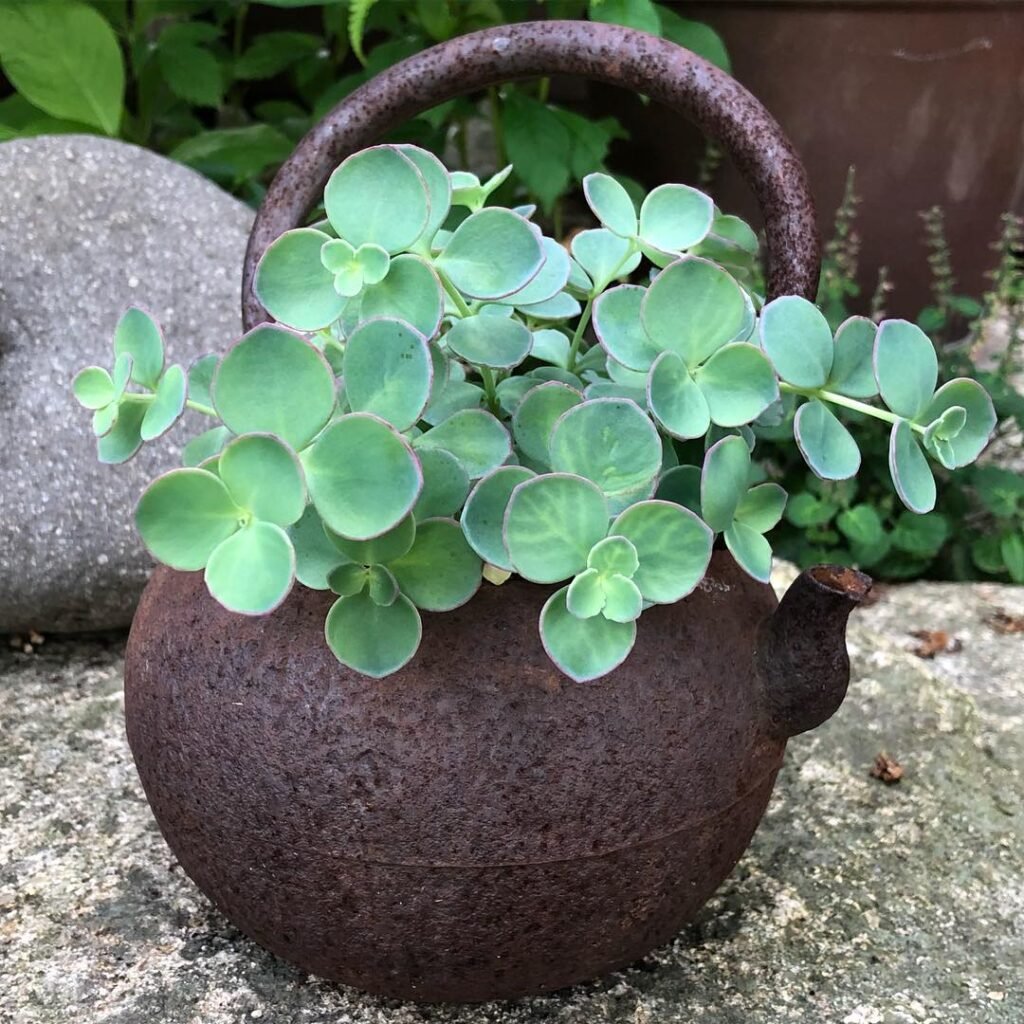
Hylotelephium sieboldii, also known as October Daphne, is a stunning succulent plant that adds a touch of beauty to any garden. Its unique appearance and low maintenance nature make it a popular choice among gardeners in the UK.
This herbaceous perennial features whorls of rounded fleshy leaves that are grey-blue in color, with a hint of purple. The leaves form a low, spreading clump, reaching a height of up to 10cm and spreading up to 20cm.
But what truly sets Hylotelephium sieboldii apart are its clusters of star-shaped pink flowers. These delicate blooms emerge in late summer and early autumn, creating a beautiful contrast against the grey-blue foliage.
Whether planted in borders, rock gardens, or containers, this low maintenance plant is sure to make a statement with its striking appearance and vibrant pink flowers.
 Did you know Hylotelephium sieboldii captivates with its late-season pink blooms, offering a splash of colour when most gardens begin to fade? Its succulent leaves and resilient nature make it a standout addition to autumn landscapes.
Did you know Hylotelephium sieboldii captivates with its late-season pink blooms, offering a splash of colour when most gardens begin to fade? Its succulent leaves and resilient nature make it a standout addition to autumn landscapes.
Light Requirements for Hylotelephium sieboldii
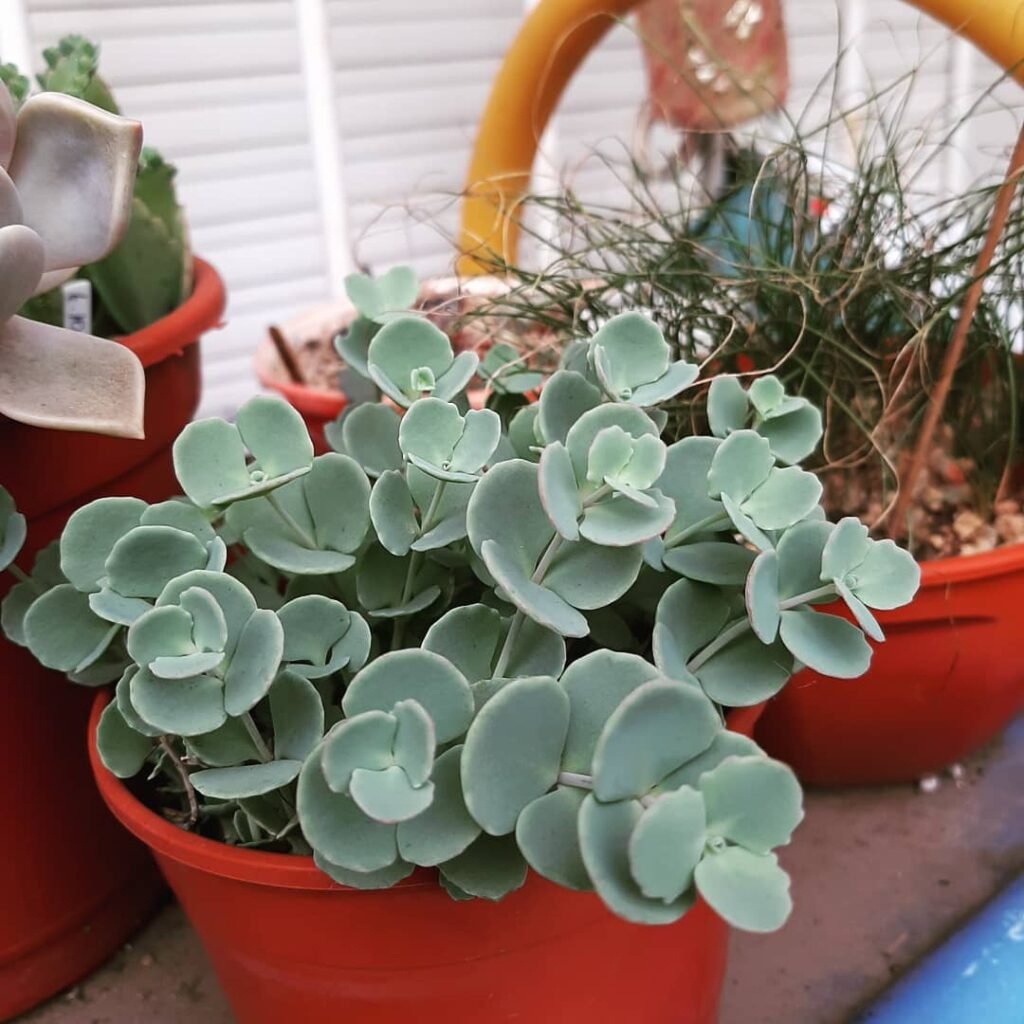

Hylotelephium sieboldii, also known as October Daphne, thrives in various light conditions, making it a versatile addition to any garden. This ornamental plant can be grown in full sun to partial shade, with a preference for a south-facing, west-facing, or east-facing aspect. By providing the plant with adequate sunlight, you can ensure healthy growth and vibrant blooms.
While Hylotelephium sieboldii requires enough sunlight to thrive, it is also tolerant of partial shade, making it suitable for a range of garden conditions. This adaptability adds to its appeal as a low-maintenance plant that can thrive in different areas of your garden.
If you have a sunny spot in your garden, placing your Hylotelephium sieboldii there will allow it to bask in the warmth and brightness of the sun’s rays. Alternatively, if you have a partially shaded area, this resilient plant will still flourish and provide beauty to your garden landscape.
- Southern England tip: Plant Hylotelephium sieboldii in a spot that receives at least 6 hours of direct sunlight for the best growth and bloom.
- Partial shade enthusiasts: If you have limited sunlight in your garden, don’t worry! Hylotelephium sieboldii can still thrive and produce its striking pink flowers in partially shaded areas.
- Versatile choice for all: Whether your garden is bathed in sunlight or enjoys a shaded nook, Hylotelephium sieboldii is a wonderful choice to bring charm and elegance to your outdoor space.

Watering Tips for Hylotelephium sieboldii (October Daphne)

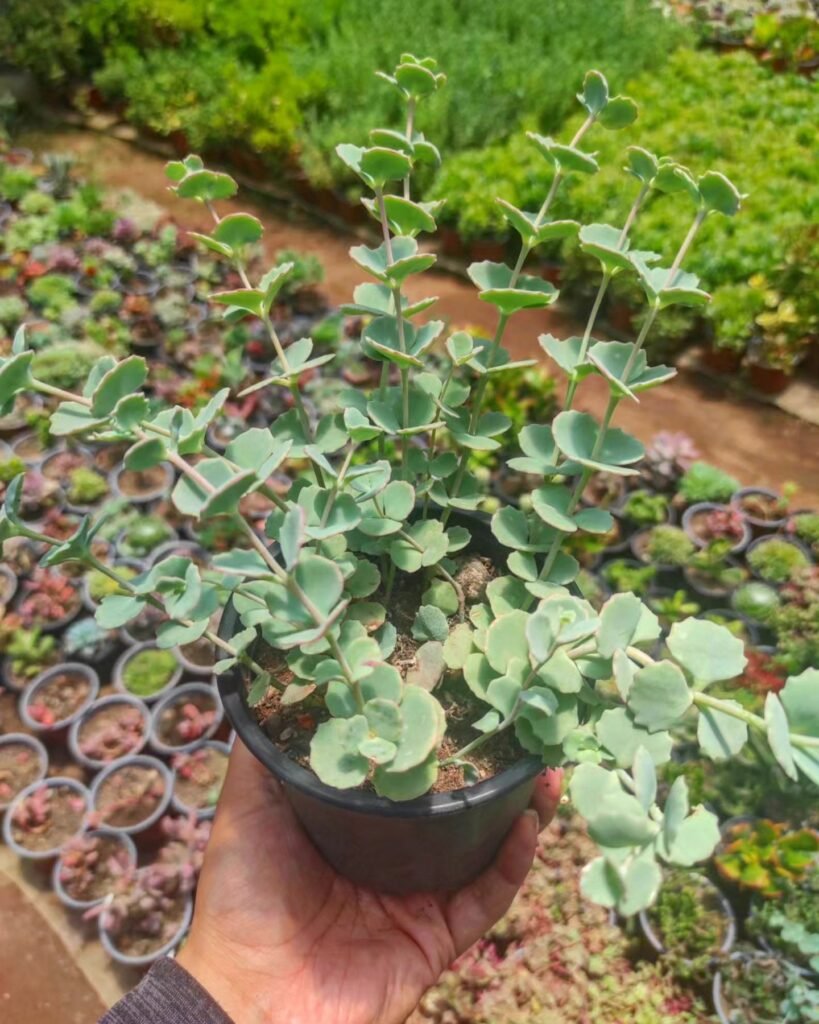
When it comes to watering Hylotelephium sieboldii, also known as October Daphne, it’s important to strike the right balance. This drought-resistant plant appreciates well-drained soil, so be sure to choose a potting mix that allows excess water to escape easily.
During its growth period in spring and summer, it’s essential to provide the plant with moderate amounts of water. A good rule of thumb is to wait until the top inch of soil feels dry before watering again. This ensures that the plant gets the hydration it needs without being overwatered, which can lead to root rot.
While Hylotelephium sieboldii is drought-resistant, it’s important not to neglect its watering needs entirely. Even in periods of dormancy, such as winter, the plant should be watered sparingly to prevent dehydration. Monitor the soil moisture carefully during this time, and only water when necessary.
To summarize, here are some watering tips for Hylotelephium sieboldii:
- Use well-drained soil to prevent waterlogging and root rot.
- Water moderately during the plant’s growth period, in spring and summer.
- Wait for the top inch of soil to dry before watering again.
- Water sparingly during the plant’s dormant period, such as winter.

Fertilizing and Soil for Hylotelephium sieboldii

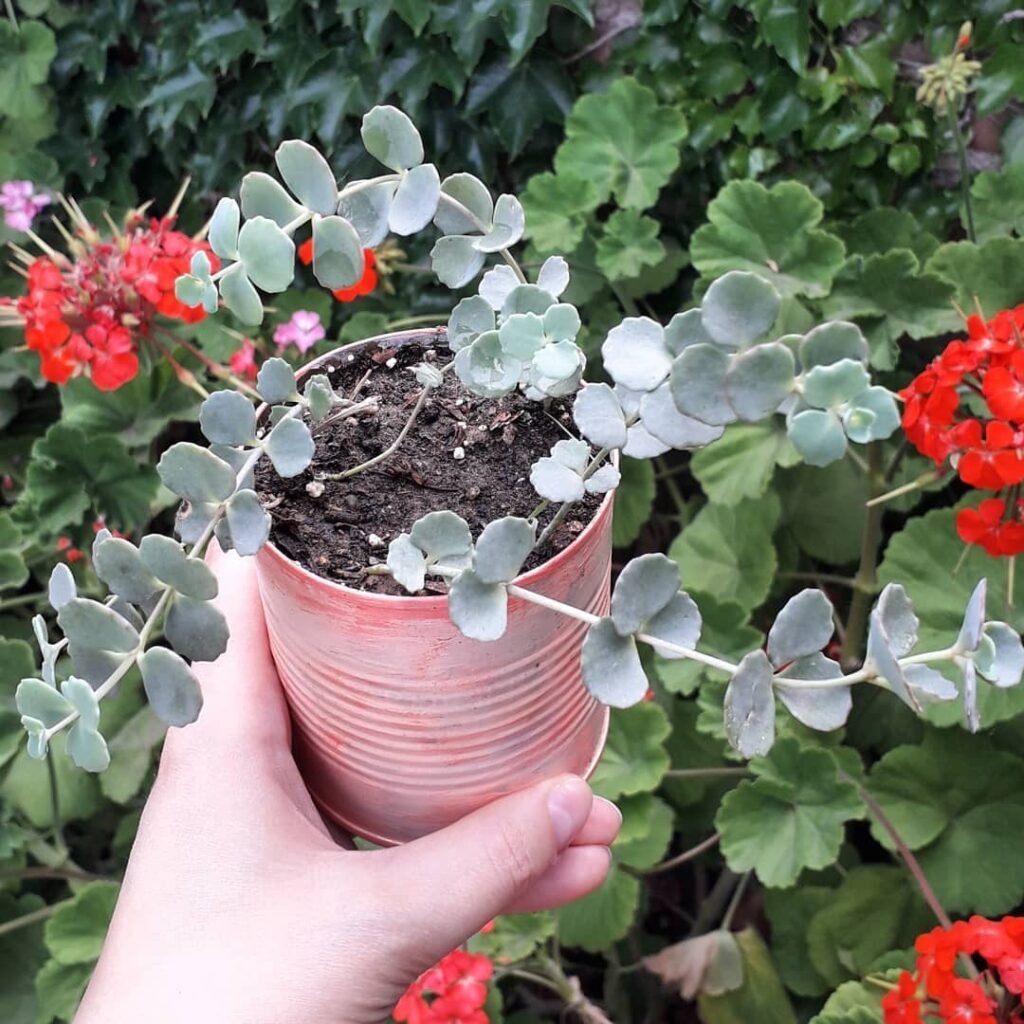
Hylotelephium sieboldii, commonly known as October Daphne, thrives in moderately fertile, well-drained soil. To create the optimal growing conditions for this stunning plant, it is recommended to use a loam-based potting compost with added grit, especially when planting it in containers. This will ensure proper drainage and prevent waterlogged roots, which can be detrimental to the plant’s health.
During the plant’s growth period, which typically occurs in spring and summer, fertilization can further promote healthy growth and abundant blooms. I recommend using a half-strength liquid fertilizer specifically formulated for succulent plants. Apply the fertilizer on a monthly basis, following the recommended dosage instructions to avoid overfertilization. This will provide Hylotelephium sieboldii with the necessary nutrients it needs to thrive.
Remember, maintaining the right balance of nutrients is crucial, as overfertilization can lead to excessive leaf growth with fewer flowers. By following these fertilizing and soil recommendations, you can ensure that your Hylotelephium sieboldii remains healthy and vibrant, showcasing its beautiful pink flowers to their fullest potential.

Pruning and Maintenance for October Daphne
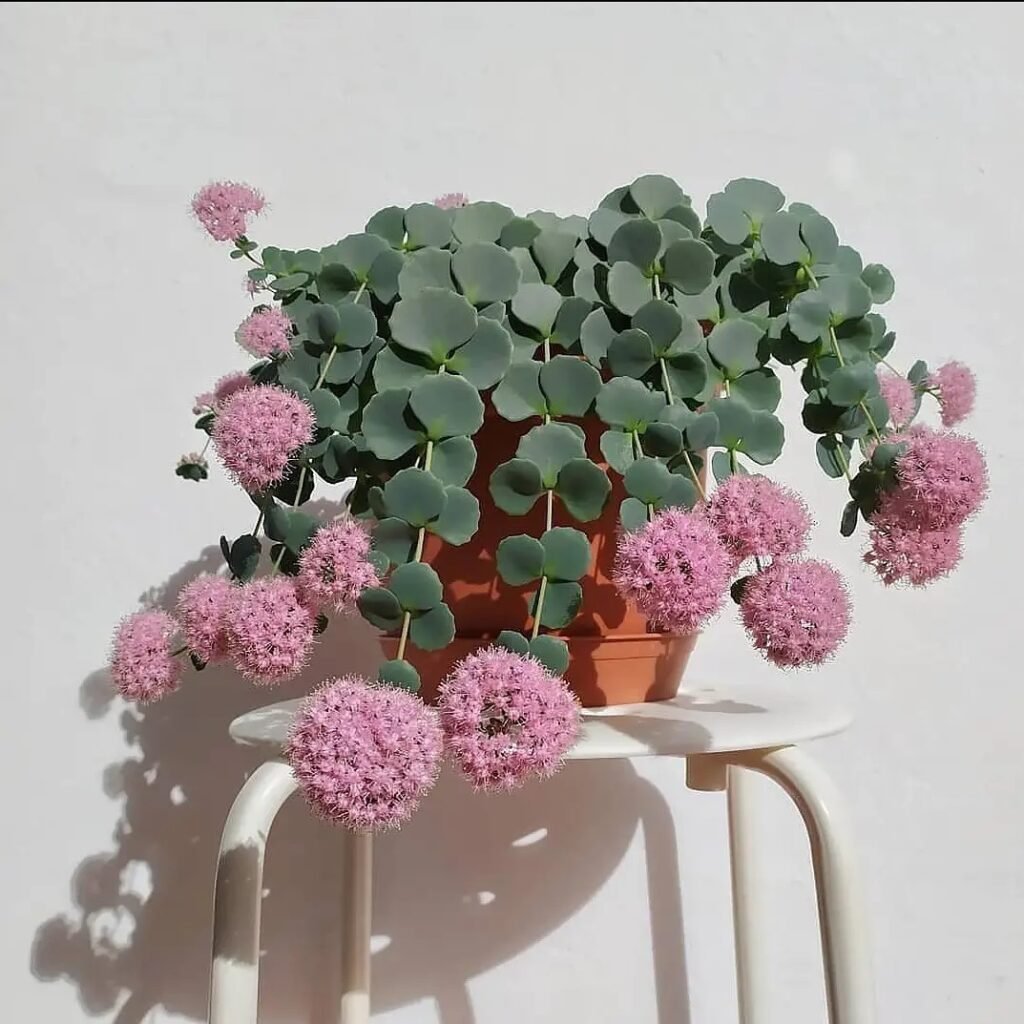
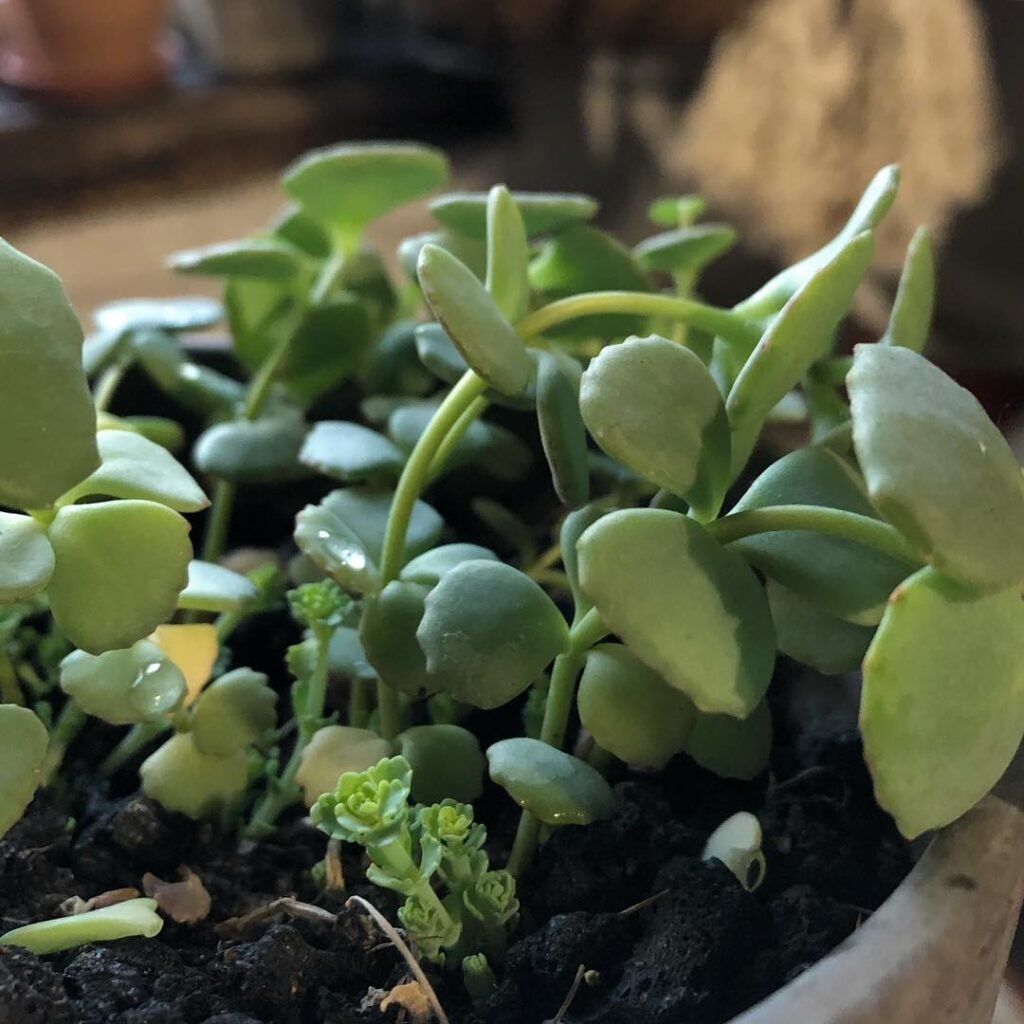
Hylotelephium sieboldii, commonly known as October Daphne, is a low-maintenance plant that requires minimal pruning and maintenance. Follow these tips to keep your plant in optimal condition:
- Pruning: After the plant has finished flowering, you can prune it to shape if desired. Simply trim back any overgrown or straggly branches to maintain a tidy appearance.
- Deadheading: Remove the spent flowers regularly to encourage new growth and prolong the blooming period.
- Foliage maintenance: Inspect the plant regularly for any signs of dead or damaged foliage. If you spot any, simply remove them to maintain the plant’s overall health and appearance.
In addition to pruning, it’s important to keep an eye out for pests that may affect your October Daphne. Common pests include aphids, scale insects, mealybugs, and vine weevils. If you notice any infestation, take appropriate measures to control these pests. There are various organic and chemical options available depending on the severity of the infestation.
Fortunately, Hylotelephium sieboldii is generally disease-free, so you can focus on enjoying its beauty without worrying about plant diseases.

Propagating Hylotelephium sieboldii (October Daphne)
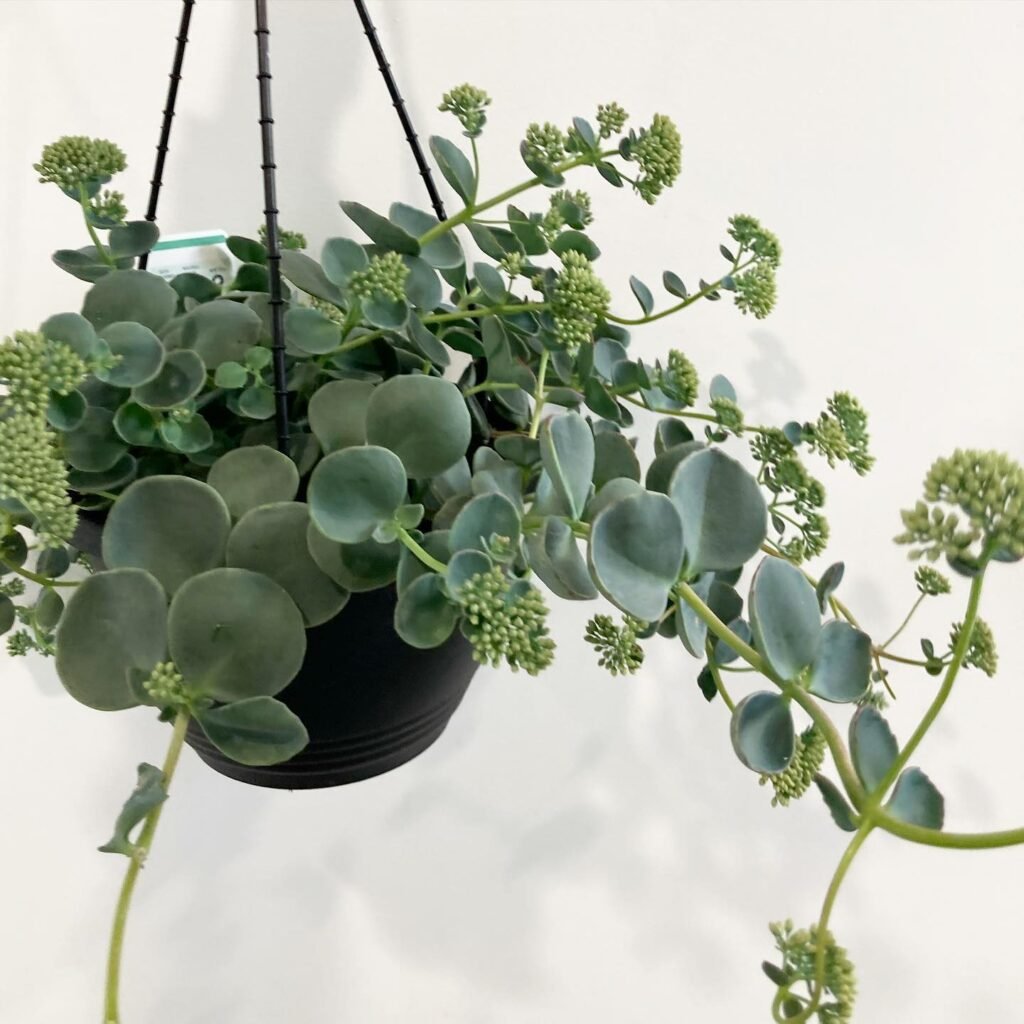

If you want to expand your collection of Hylotelephium sieboldii or share the beauty of this plant with friends and family, propagating it through softwood cuttings is a straightforward and rewarding method. Here’s how:
- Choose a healthy stem: Select a non-flowering shoot from the parent plant in early summer. Look for a stem that is sturdy and free from any signs of disease or damage.
- Remove lower leaves: Carefully pinch off the lower leaves from the stem, leaving only a few pairs of leaves at the top. This will help the cutting direct its energy towards root development.
- Dip in rooting hormone: Dip the cut end of the stem in a rooting hormone powder or gel. This will encourage the development of roots, ensuring successful propagation.
- Plant in well-draining soil: Prepare a well-draining soil mixture using a combination of potting soil and perlite or sand. Make a small hole in the soil and gently place the cutting in it, ensuring that at least one or two leaf nodes are below the soil surface.
- Provide ideal conditions: Place the pot with the cutting in a warm and bright location, preferably with indirect sunlight. Mist the cutting regularly to maintain high humidity levels and prevent wilting.
- Root development: Within a few weeks, roots should start to develop from the cut end of the stem. You can gently tug on the cutting to check for resistance, indicating that roots have formed.
- Pot up the new plants: Once the new plants have well-established roots, carefully remove them from the propagation pot and pot them up individually into suitable containers. Ensure the containers have drainage holes and use a well-draining soil mixture.
- Care for the new plants: Water the newly potted plants thoroughly and place them in a location that receives the appropriate amount of sunlight for Hylotelephium sieboldii. Continue to care for them as you would for mature plants.

Repotting Tips for Hylotelephium sieboldii
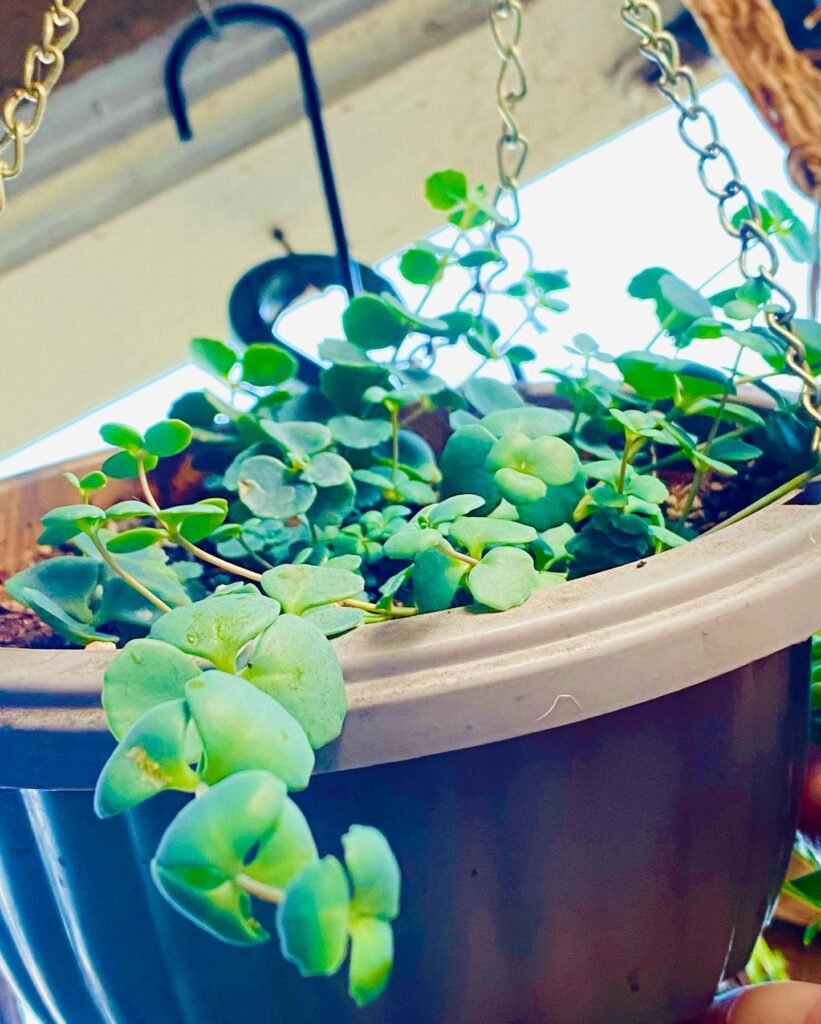
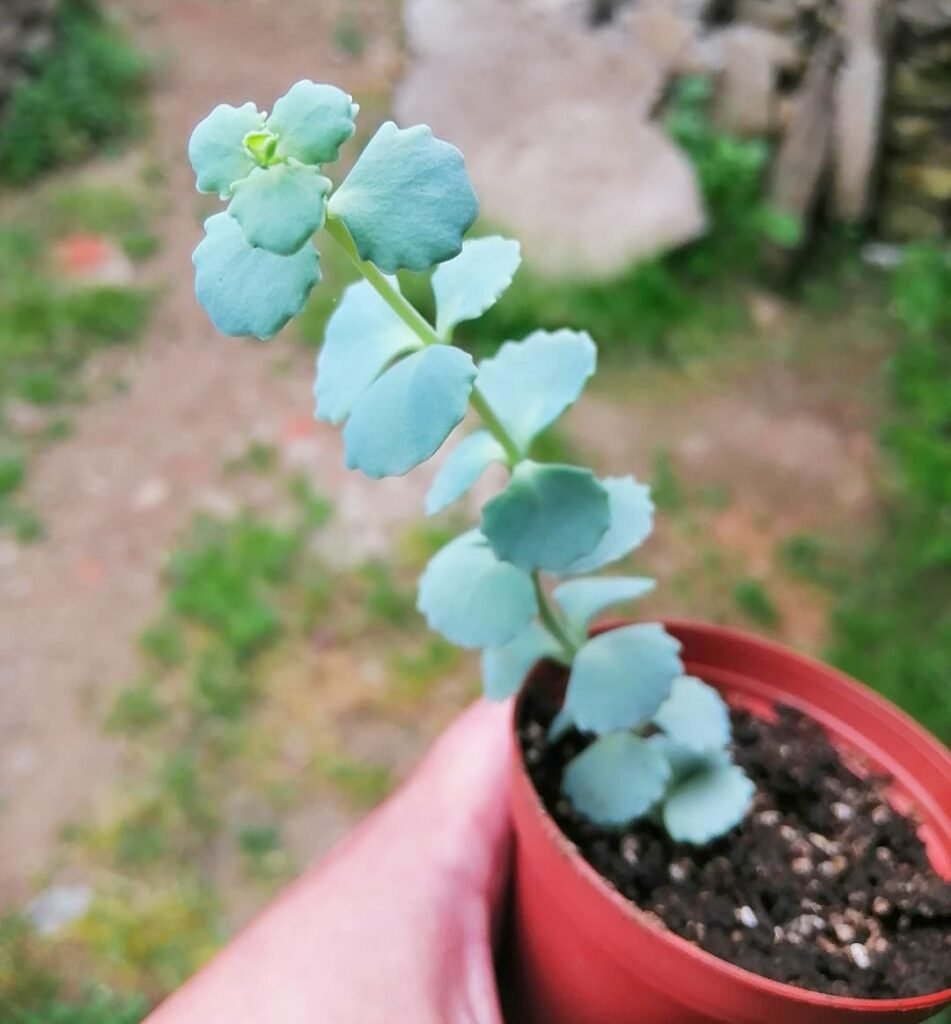
Repotting Hylotelephium sieboldii, also known as October Daphne, may not be necessary often as this slow-growing plant takes its time to outgrow its container. However, if you notice that your plant has become rootbound or the soil has become depleted, it’s time to give it a new home.
To repot Hylotelephium sieboldii, follow these simple steps:
- Choose the right container: Select a container with drainage holes to ensure proper water drainage. This will help prevent waterlogged soil and root rot.
- Prepare the soil mixture: Fill the new container with a well-draining soil mixture. A mix of loam-based potting compost with added grit works well for Hylotelephium sieboldii.
- Remove the plant from its current container: Gently turn the container upside down and tap the bottom to loosen the plant’s roots. Carefully lift the plant out of the container, taking care not to damage the roots.
- Position the plant in the new container: Place the plant in the new container, ensuring it is positioned at the same depth as before. Avoid burying the plant too deep or leaving it too exposed.
- Fill in the gaps: Fill the gaps around the plant with the prepared soil mixture, ensuring that the roots are covered and supported. Gently press the soil down to secure the plant.
- Water thoroughly: After repotting, give the plant a thorough watering to help settle the soil and hydrate the roots. Allow the soil to dry out slightly between waterings to avoid overwatering.
 Did you know Hylotelephium sieboldii can flourish in rocky, gravelly soils that are typically inhospitable for many plants? Its succulent leaves store water, allowing it to showcase vibrant pink blooms in autumn.
Did you know Hylotelephium sieboldii can flourish in rocky, gravelly soils that are typically inhospitable for many plants? Its succulent leaves store water, allowing it to showcase vibrant pink blooms in autumn.
FAQ about Hylotelephium sieboldii (October Daphne)

Curious about how to best look after your Hylotelephium sieboldii, or October Daphne? You’ve landed in just the right place! I’ve compiled all the key questions to guide you through caring for your plant with simplicity. From getting the watering just right to solving common issues, you’re in good hands.
Hylotelephium sieboldii, known as October Daphne, is a succulent with round, blue-green leaves and pink flowers that bloom in the autumn. It’s called October Daphne because of its vibrant blooms during the late season.
Yes, it can thrive outdoors in the UK in a well-drained, sunny spot. It’s hardy but benefits from protection from the wet and extreme cold.
A well-draining, sandy or gravelly soil is ideal. Mixing in perlite or grit to standard potting soil can improve drainage.
It requires full sun to partial shade. In the UK, a south-facing position ensures it gets enough light.
Water when the soil is completely dry. Over-watering is a common mistake. Reduce watering in the winter to mimic its natural dormant period.
In colder parts of the UK, it’s best to move it indoors or to a greenhouse. If planted in the ground, ensure good drainage and use mulch or fleece for protection.
Fertilize sparingly in the spring with a diluted low-nitrogen succulent fertilizer to encourage growth without compromising flower production.
Propagate from cuttings or leaves. Place them on well-draining soil until they root. Spring or early summer is the best time for propagation.
Yellowing leaves can indicate over-watering. Let the soil dry out completely between watering sessions.
Yes, it’s well-suited to container gardening. Ensure the pot has good drainage holes.
Keep an eye out for aphids and mealybugs. Treat infestations early with insecticidal soap or neem oil.
Lack of flowers is often due to insufficient sunlight or over-fertilization. Ensure it gets enough light and reduce fertilizing.
It typically grows up to 15 cm tall and can spread about 30 cm wide, forming a dense mat.
Hylotelephium sieboldii is not known to be toxic, but it’s always best to keep plants out of reach of pets and children.
Repot every 2-3 years or when it outgrows its current container, using fresh, well-draining potting mix.
Root rot from overwatering is the most common issue. Ensure proper soil drainage and do not let water accumulate.
Prune in early spring to remove any dead foliage and encourage fuller growth. Use clean, sharp scissors.
Pinching back the tips in spring can promote a bushier plant. Be gentle to avoid damaging the succulent leaves.
Yes, its drought tolerance and succulent leaves make it an excellent choice for rock gardens, where it can thrive in the well-drained conditions.
October Daphne pairs beautifully with other drought-tolerant plants like sedums, lavender, and ornamental grasses, creating a varied yet cohesive low-water garden scheme.
I trust this FAQ has clarified the care requirements for your Hylotelephium sieboldii, or October Daphne. If you’re still curious or have additional questions, don’t hesitate to drop them in the comments. Happy gardening! 🌱

